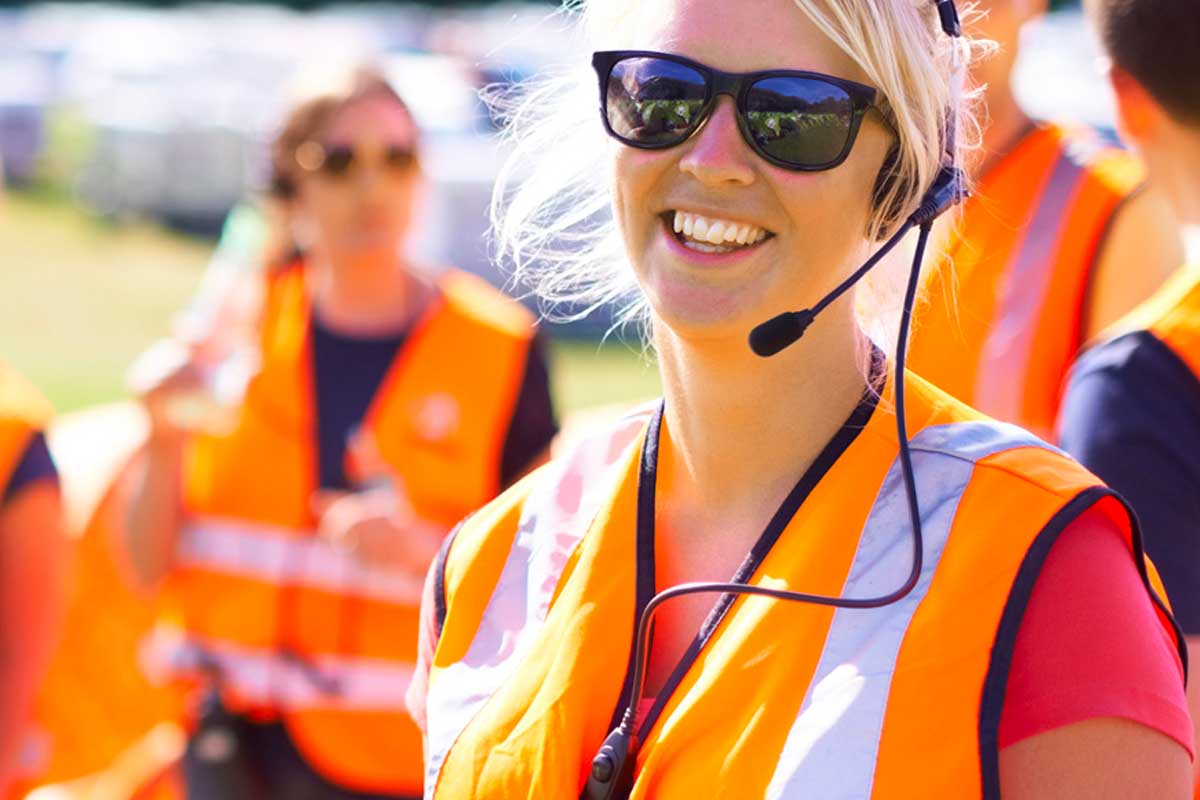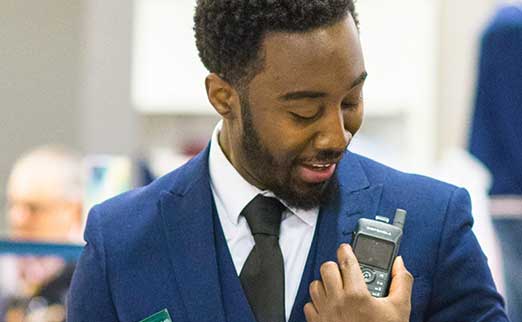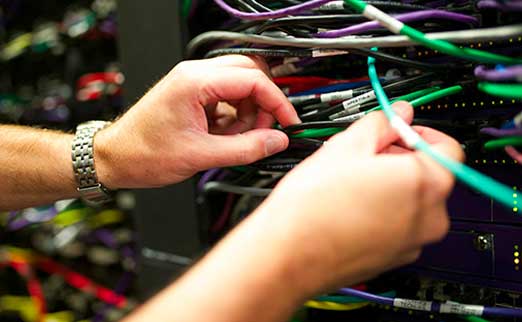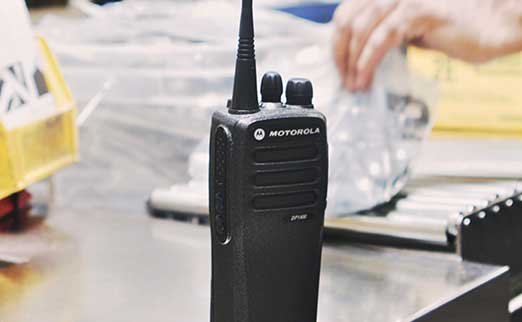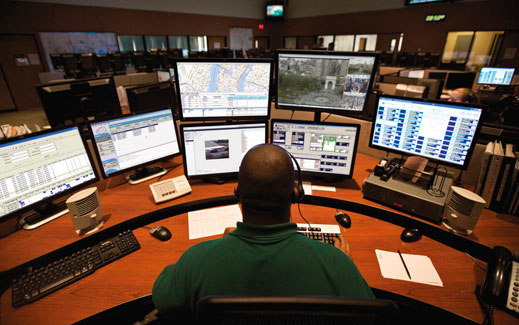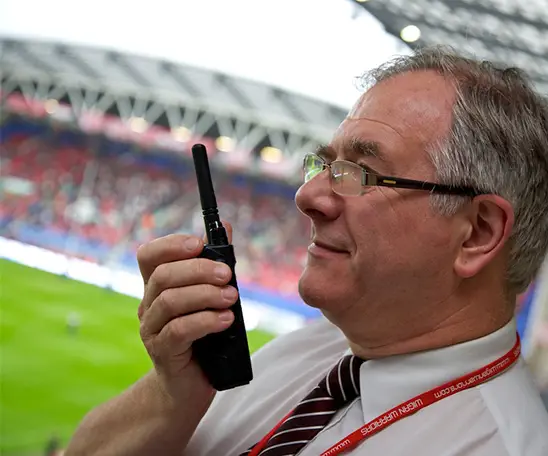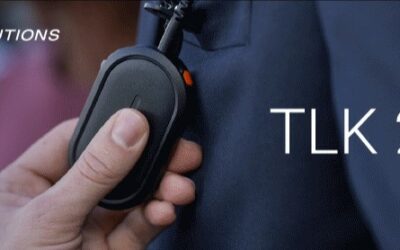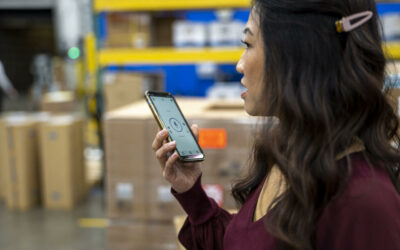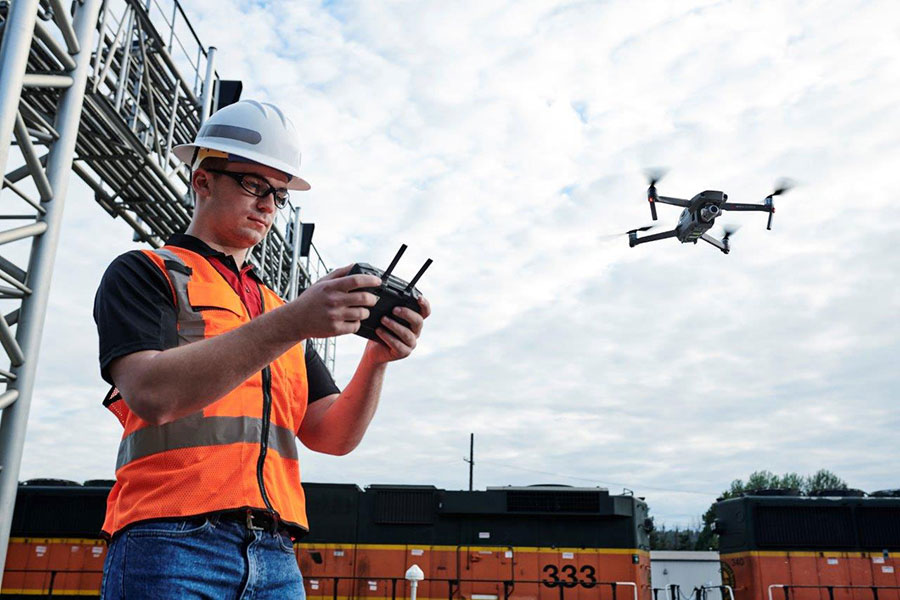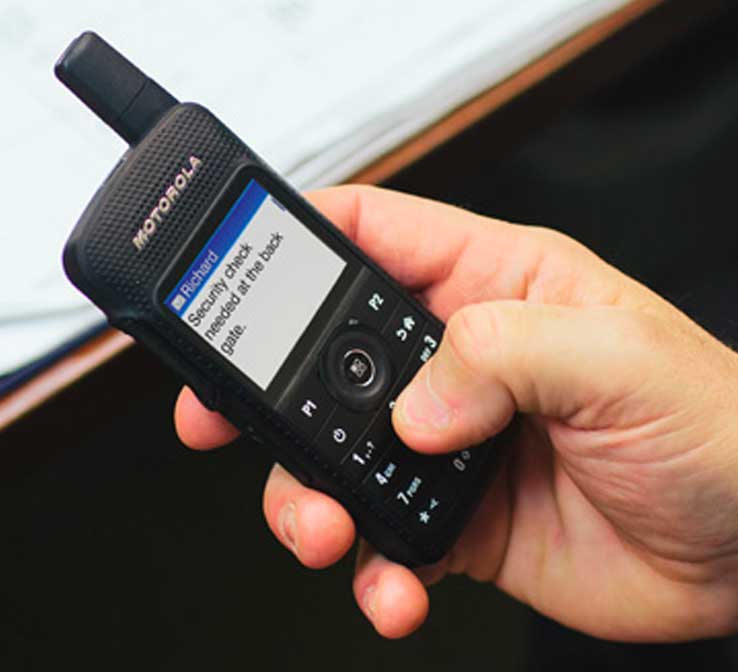In the busy environment of holiday parks, efficient communication is essential for smooth operations. Teams spread across wide-ranging grounds can often face challenges with coordination tasks, managing emergencies and providing the best possible customer service....
The Do’s and Don’ts of Radio Communication
Although straightforward, radio communication still has its own best practises. This list of do’s and don’ts will help you ensure that you use your walkie-talkies correctly and efficiently while sticking to the radio etiquette when talking to other users.
The do’s of radio communication
Think before you speak
It’s important to think about what you’re going to say before you start transmitting your message. This is because, while you are transmitting and holding down the talk button, no one else can use their radio to communicate. Radio communication is meant to be efficient and straightforward to ensure no one is stopped from having access to transmit an emergency message.
Know how to use your radio equipment emergency features
Some radios offer special emergency features that cut through the current transmission to prioritise the emergency message, however, it’s not necessarily applicable to all radios. So, it’s crucial to know exactly how your radio works in emergency situations, so you can stay calm and reach out for help. For special features, you can visit our Radio Applications page, or alternatively speak to a member of the team on 0800 043 2688 or sales@dcrs.co.uk for more information of which two-way radios come equipped with emergency features such as Man Down and Lone Worker.
Make sure to identify yourself and highlight who your message is for
It’s important to start your message with an introduction, by giving all important information to not only identify yourself but also the person receiving the message, to not cause confusion. For example, a good way to do this is by calling out the recipient’s name or call sign followed by your own name or call sign. Then after giving all the important identification and getting the heads-up that they are listening and are connected; you can transmit your focused message.
Speak in a normal tone
When using walkie-talkies or two-way radios, it’s important to speak in your normal voice volume rather than shouting and being excessively loud for several reasons:
- Sound clarity and distortion: Shouting into a two-way radio can cause distortion of the transmission technology. These devices are designed to pick up normal voice levels and amplify them appropriately. When you shout, the microphone can become overwhelmed, leading to garbled and unclear transmissions. Speaking in a normal voice ensures that your message is transmitted clearly, enabling the receiver to easily understand the intended message.
- Microphone sensitivity: Walkie-talkies and two-way radios are equipped with sensitive microphones that are designed to capture normal speaking volumes. Excessive loudness is not compatible and can cause the frequencies in the microphone to peak, resulting in audio signals losing sound quality and potentially damaging the technologies of the microphone over time.
- Receiver comfort: The person on the other end of the radio is likely wearing a headset or holding the device close to their ear. Shouting can create an uncomfortable and potentially painful reception experience for them, making communication unpleasant and less effective.
- Battery life: Using a normal voice helps conserve battery life. Shouting can cause the device to use more power to handle the increased input volume, leading to quicker battery drain.
- Professionalism and communication efficiency: Clear, calm, and concise communication is key in professional and emergency situations where two-way radios are often used. Shouting can convey panic or urgency when it may not be necessary, potentially leading to forms of misunderstandings or unnecessary alarm.
By speaking in your normal voice volume, you ensure efficient, focused, and professional communication, making the best use of your walkie-talkies or two-way radios.
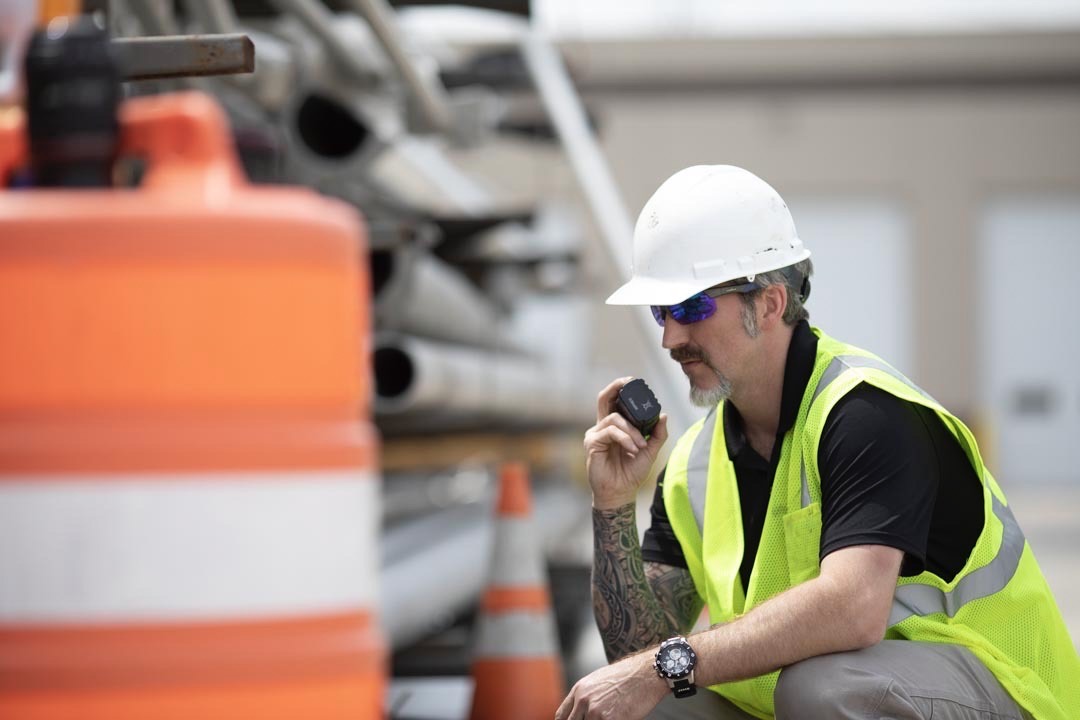
Understand the general radio terms
Two-Way Radios and Walkie-Talkies
Communicational devices via radio waves like walkie-talkies and two-way radios allow for bidirectional voice communication. Unlike regular radios that only receive audio signals, two-way radios and walkie-talkies can both send and receive voice transmissions. They are widely used in various industries for communication such as public safety, military, construction, and event management due to their reliability and ease of use.
Radio Communication Lingo
To speed up and simplify communication, users of two-way radios and walkie-talkies often use pre-set lingo. Here are some of the main terms:
- Over: This indicates that you have finished speaking and are awaiting a response. It signals the end of your transmission but not the end of the conversation.
- Example: “We need more supplies at the site, over.”
- Roger: This word means that you have received and understood the message. It is equivalent to saying, “I understand.”
- Example: “Roger, I’ll bring the supplies over.”
- Copy: Like “Roger,” it means that the message has been received and understood.
- Example: “Copy that, I’m on my way.”
- Radio Check: This is used to test the communication link between two radios, ensuring that both are functioning and can transmit and receive messages clearly.
- Example: “Radio check, can you hear me?”
- Affirmative/Negative: These are used to answer yes or no questions clearly and unambiguously.
- Example: “Are you at the north entrance? Affirmative.”
- Standby: This means that the person will temporarily stop transmitting but will be back shortly.
- Example: “Standby, checking the schedule.”
Industry-Specific Terms
Certain industries have specific terms or use common terms in particular ways. For example:
- Retail Sector: In retail, the term “over” is frequently used to manage in-store communication effectively.
- Example: “Customer assistance needed at checkout, over.”
- Construction: On construction sites, clear communication is crucial for safety and efficiency. Terms like “copy”, “roger”, and “standby” are commonly used.
- Example: “Crane moving materials to the second floor, copy?”
- Public Safety: Emergency services such as police, fire, and EMS use detailed and precise lingo to ensure quick and accurate communication.
- Example: “All units, report to sector five immediately, roger.”
By using these standardised terms, radio communication becomes faster, more efficient, and reduces the likelihood of misunderstandings, which is crucial in environments where timely and clear communication is essential.
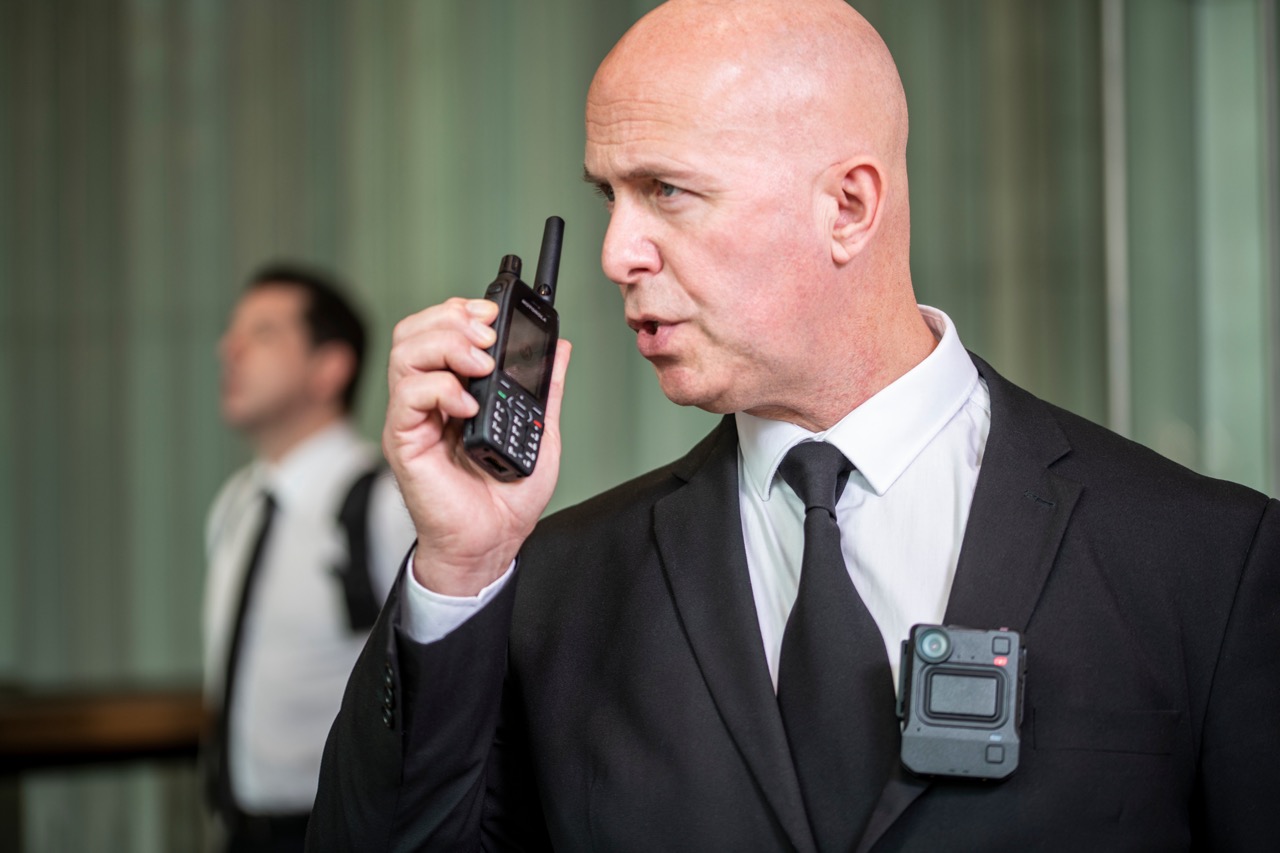
The Don’ts of radio communication:
Don’t transmit confidential information
When it comes to licence-free radio communication, the security of your data can’t always be guaranteed. So, unless you have guaranteed security in place (for example, a licenced radio), we recommend that you don’t communicate any sensitive or personal information over your radio, as the frequency is shared and can be used by people outside your organisation. To find out more about two-way radio licencing, please don’t hesitate to contact us on 0800 043 2688 or sales@dcrs.co.uk.
Don’t interrupt other people’s messages
When using two-way radio equipment, it is important to wait until other messages are finished before you speak and transmit your own, unless it’s an emergency, for several reasons:
- Preventing interference
- Ensuring message clarity and comprehension
- Maintaining communication protocol
- Avoiding miscommunication
- Respecting the communication channel
- Enhancing safety
Exception for Emergencies
In the case of an emergency, it is acceptable to interrupt ongoing connected transmissions because immediate communication can be crucial for addressing urgent situations. When transmitting an emergency message, users typically use specific emergency terms or codes to alert others to the urgency and priority of the message.
Don’t expect an immediate response from other users
When using two-way radios in a work setting, it’s important to remain patient if people do not communicate back immediately. They might be in the middle of a focused work task, which could prevent them from replying right away. Here are a few reasons why patience is crucial:
- Allowing time for task completion
- Ensuring safety
- Respecting workflow and efficiency
- Encouraging clear and thoughtful communication
Practical Tips:
- Wait for a response: After sending a message, wait patiently for a response. Avoid repeatedly calling the person if they don’t communicate back immediately.
- Acknowledge potential delays: Understand that delays are a normal part of using two-way radios in a busy work environment.
- Prioritise communications: Use radio communications to transmit important messages that require immediate attention and be mindful of interrupting colleagues only when necessary.
Don’t start your message right after pressing the transmission button
When using walkie-talkies, there can often be a short delay before your message begins transmitting. To ensure that no part of your message is cut off, it’s important to wait for a second or two before you start speaking. This pause allows the device to fully engage and capture your entire message.
Don’t answer if you aren’t certain the message is for you
When using a two-way radio, it’s important not to respond unless you are certain that the message is intended for you. Responding prematurely can interrupt the actual recipient from being able to respond. To avoid this, wait until you hear your caller number or name before answering. This ensures clear and effective communication without unnecessary interruptions in communication.
In conclusion, following best practices for walkie-talkie communication is crucial for ensuring clear and effective radio interactions. Properly timing your responses and waiting for your caller number or name before replying can prevent misunderstandings and interruptions. DCRS is committed to providing excellent communication solutions and offers free demonstrations to ensure users are satisfied with their specific two-way radio systems. We work with various sectors, including security, construction, and event management, and offer a range of high-quality walkie-talkies to meet diverse needs.
For more information, please don’t hesitate to contact us on 0800 043 2688 or sales@dcrs.co.uk.
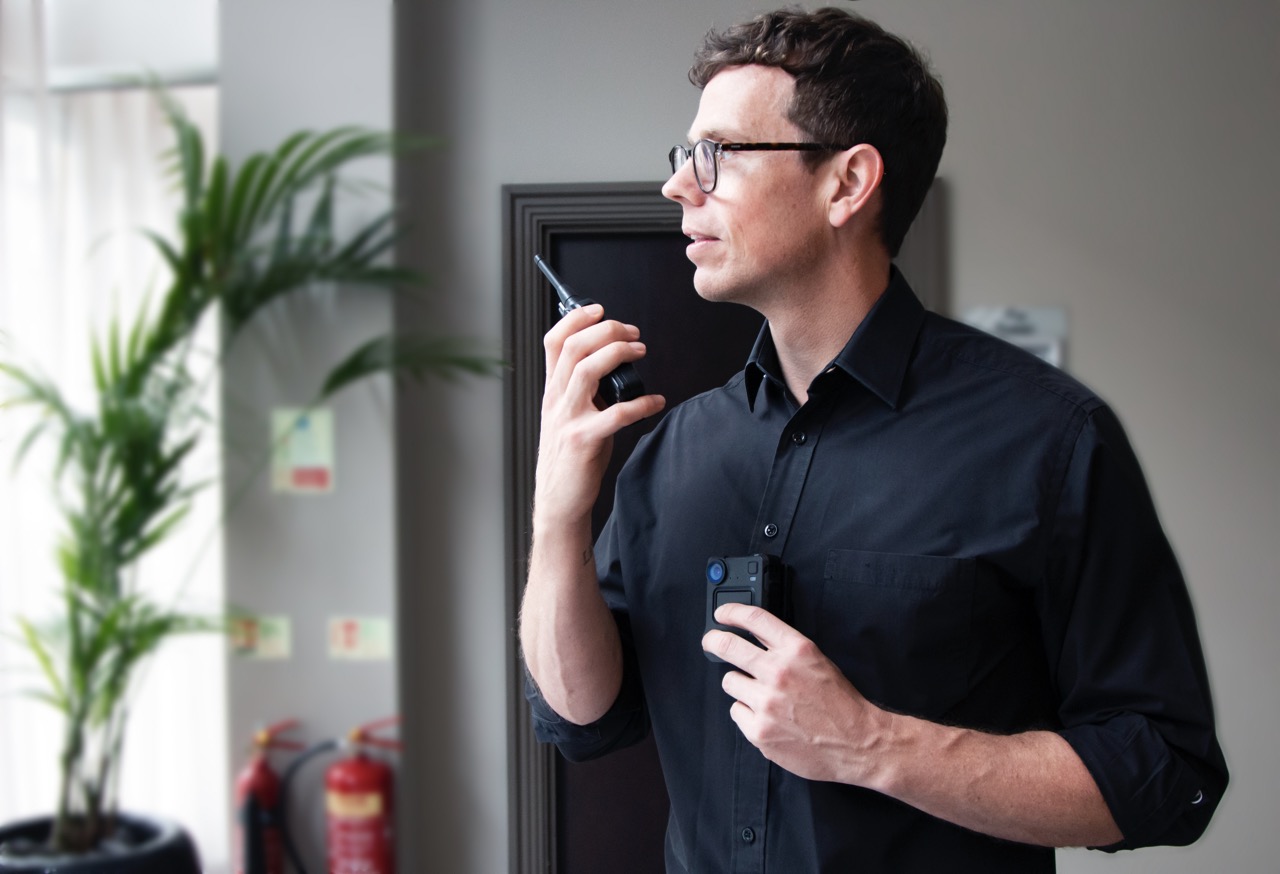
Need help choosing the perfect radio for you?
Call our team Free on:
0800 043 2688
for Hire and Purchase options.
Recent News
Best Walkie-Talkies For Holiday Parks
In the busy environment of holiday parks, efficient communication is essential for smooth operations. Teams spread across wide-ranging grounds can often face challenges with coordination tasks, managing emergencies and providing the best possible customer service....
Introducing the Motorola Solutions WAVE PTX TLK 25 Wearable Communications Device
Communicate and operate confidently with the TLK 25 Wi-Fi based device A WAVE PTX Wi-Fi only device that expands your capabilities beyond push-to-talk. With the TLK 25 you get a device that is compact, powerful, and equipped with an intuitive voice assistant for...
DCRS wins award for Greatest WAVE PTX Revenue in EMEA for 2023
DCRS team awarded for Greatest WAVE PTX Revenue in EMEA for 2023 We are proud to announce that DCRS are the winners of the Motorola Empower award for Greatest WAVE PTX Revenue in EMEA for 2023. We are unbelievably proud of this and to be a Tier 1, Platinum Motorola...

